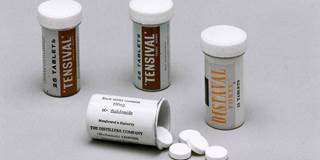In the pharmaceutical industry, most prescription medications are developed and marketed for a single disease, rather than a family of illnesses. But this approach increases research costs and limits innovation – and may be preventing us from discovering that the next wonder drug is right under our noses.
CHARLOTTESVILLE – Producing effective medicines requires huge investments of time and money. The average drug on the market today spent a decade in the lab and in clinical trials, and cost more than $2 billion to develop. Unfortunately, most prescription drugs are marketed for a single disease, rather than a group of diseases for which they could be safe and effective. This increases development costs, and complicates the discovery of new drug applications.
Fortunately for patients everywhere – not to mention the pharmaceutical industry and health-care systems worldwide – there is a better approach. Similar to recycling of household goods, “systematic drug repositioning” seeks to make drugs developed for one illness capable of treating another.
That is the story of thalidomide, which was used in the 1950s and 1960s by pregnant women to allay morning sickness, but was banned after it was found to cause severe birth defects. After significant study, however, scientists modified the drug’s molecular structure to alter how it works. Now, the thalidomide family of drugs is prescribed for multiple myeloma, mantle cell lymphoma, certain skin diseases, and some forms of anemia.

CHARLOTTESVILLE – Producing effective medicines requires huge investments of time and money. The average drug on the market today spent a decade in the lab and in clinical trials, and cost more than $2 billion to develop. Unfortunately, most prescription drugs are marketed for a single disease, rather than a group of diseases for which they could be safe and effective. This increases development costs, and complicates the discovery of new drug applications.
Fortunately for patients everywhere – not to mention the pharmaceutical industry and health-care systems worldwide – there is a better approach. Similar to recycling of household goods, “systematic drug repositioning” seeks to make drugs developed for one illness capable of treating another.
That is the story of thalidomide, which was used in the 1950s and 1960s by pregnant women to allay morning sickness, but was banned after it was found to cause severe birth defects. After significant study, however, scientists modified the drug’s molecular structure to alter how it works. Now, the thalidomide family of drugs is prescribed for multiple myeloma, mantle cell lymphoma, certain skin diseases, and some forms of anemia.